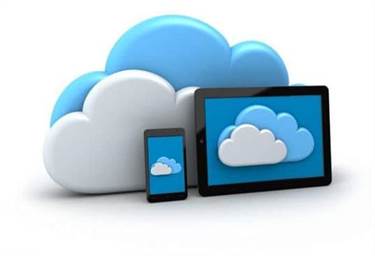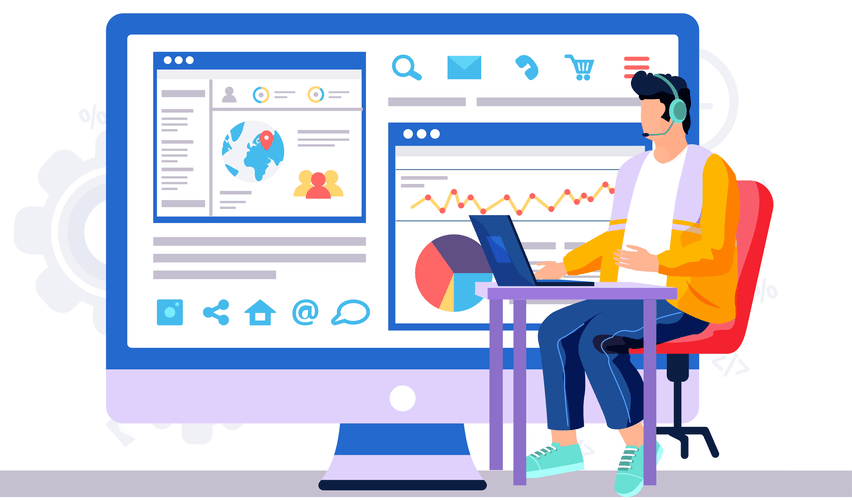Enterprise technology is any type of software, hardware, or system that is part of a large organization with more than 100 employees. Product management software, customer relationship management systems, and collaboration tools are good examples. Used well, enterprise technology can streamline workflows — making it easier for organizations to achieve their goals. ERP software is a large suite of integrated applications that manage everyday business processes and automate back-office functions. It’s designed to centralize and optimize operations with its connectivity while reducing manual labor.

An enterprise information system (EIS) is any kind of information system which improves the functions of an enterprise business processes by integration. This means typically offering high quality of service, dealing with large volumes of data and capable of supporting some large and possibly complex organization or enterprise. Frequently the term is used only to refer to very large organizations such as multi-national companies or public sector organizations. However, the term may be used to mean virtually anything, by virtue of it having become the latest corporate-speak buzzword. Enterprise information systems provide a technological platform that enables organizations to integrate and coordinate their business processes on a robust foundation. An EIS is currently used in conjunction with customer relationship management and supply chain management systems to automate business processes.
Contents
Enterprise resource planning (ERP) consists of tools intended to facilitate the management of all information that impacts a company’s business decisions. Depending on your company’s niche, you’ll benefit from different functionality available in ERP software. There are several ERP system examples that can streamline operations for manufacturing, accounting, marketing and more. Men’s grooming product maker Fulton & Roark successfully implemented enterprise resource planning to better track inventory and financial data.
- Last on our list of enterprise resource planning examples is a leading cloud-based ERP software that’s designed for fast-growing, changing businesses.
- Enterprise application software can handle large amounts of data with a high level of precision.
- Employ variable-compensation programs with incentive and commission direction as you stay mindful of sales performance and upkeeping tactful plans.
- As mentioned, cloud options significantly reduce both capital and operating costs – improving both ROI and TCO.
- Modern cloud ERP software also connects internal operations with business partners and networks around the world, giving companies the collaboration, agility, and speed they need to be competitive today.
The key is to prevent ERP projects from being split into smaller projects, which can result in cost overruns. ERP applications also allow the different departments to communicate and share information more easily with the rest of the company. It collects information about the activity and state of different divisions, making this information available to other parts, where it can be used productively.
ERP-System example:
With third-party integrations it is possible to make payment transactions safer, faster, and easier. With these services, the program can adjust to large-scale business needs without decreasing high standards of performance. HubSpot helps marketers and sales managers reach out to contacts, nurture leads and monitor the results of campaigns. The work of both units is aligned since all information (for sales and marketing teams) is stored in one place.
The installation and maintenance of the hardware and software is your staff’s responsibility. The first large-scale mechanical information system was Herman Hollerith’s census tabulator. examples of enterprise information systems Invented in time to process the 1890 U.S. census, Hollerith’s machine represented a major step in automation, as well as an inspiration to develop computerized information systems.
What Are The Types Of Information Systems?
Your team should then build the functions that will bring your system to life. Once you’ve designed everything, it’s time to purchase and install your new mechanisms. This process can be expensive and time-consuming—after all, you’re supplanting your entire organization’s status quo.

But, unfortunately, many elements out there will readily hack into different types of information systems and steal or corrupt data, perhaps even shutting down an entire business operation. Decision Support Systems use different decision models to analyze or summarize large pieces of data into an easy-to-use form that makes it easier for managers to compare and analyze information. Tools such as laptops, databases, networks, and smartphones are examples of information systems. Many people rely on various types of information systems to communicate with friends and family, bank or shop online, or look up information via a search engine.
A Step-by-Step Guide To Become A Cyber Security Architect
In this scenario, a couple of ERP capabilities work together to ensure a company will have the products that their customers want, and ultimately, improve customer satisfaction. Companies and organizations employ information systems to communicate and work with their customers and suppliers, manage the organization, perform essential business operations, and roll out and maintain marketing campaigns. Businesses employ enterprise resource planning (ERP) for various reasons, such as expanding, reducing costs, and improving operations. The benefits sought and realized between companies may differ; however, some are worth noting. Each type of enterprise software solution focuses on specific goals and offers different functionalities.
In the mid 1980’s, competition in the manufacturing sector was exploding and new tools were required. New MRP II software integrated accounting and finance, sales, purchasing, inventory, and manufacturing planning and scheduling – providing the manufacturer with an integrated system. Enterprise technologies span functional areas from accounting to marketing to security — and may be used by both internal and external teams. The table below includes a summary of the common types of enterprise technology. Information systems provide a common forum to connect with different parties in supply chain management. An information system is a group of data sets that ensures that business operates smoothly, embracing change, and helping companies achieve their goal.
Enterprise Resource Planning (ERP)
Such a system isn’t very helpful, however, to middle or top-level managers, who need systems to help them carry out their oversight and planning responsibilities. To design marketing programs, for instance, marketing managers rely on summary information gleaned from a dedicated customer-relationship management system. Let’s look at some of the widely available information systems designed to support people at the operational and upper-management levels.

Enterprise resource planning (ERP) is a platform companies use to manage and integrate the essential parts of their businesses. Many ERP software applications are critical to companies because they help them implement resource planning by integrating all the processes needed to run their companies with a single system. For any organization with a complex structure, be it a large corporation, educational institution or government department, proper software is essential. There are different types of enterprise systems that ensure stable operational flow and make the management of assets easier. Caesars uses another particularly interesting, and sophisticated, application of artificial intelligence. In the hotel-casino business, it’s crucial to identify and turn away undesirable visitors.
Top ERP System Examples
Obtain real-time profit and margin contributions via real-time documenting, predictive analytics and integrated business planning to evaluate profitability and oversee customer experience tactics. Work with a merged project management apparatus that provides automated control over financials and execution activities. You also manage capital asset projects, planning, budgeting and estimations and obtain resource availability and their performance metrics for project implementation. Systemize accounting with third-party transactional systems to implement bookkeeping policies and meet diverse reporting requirements in an automated and controlled technique. You may utilize support references to review results and assess subledgers.
